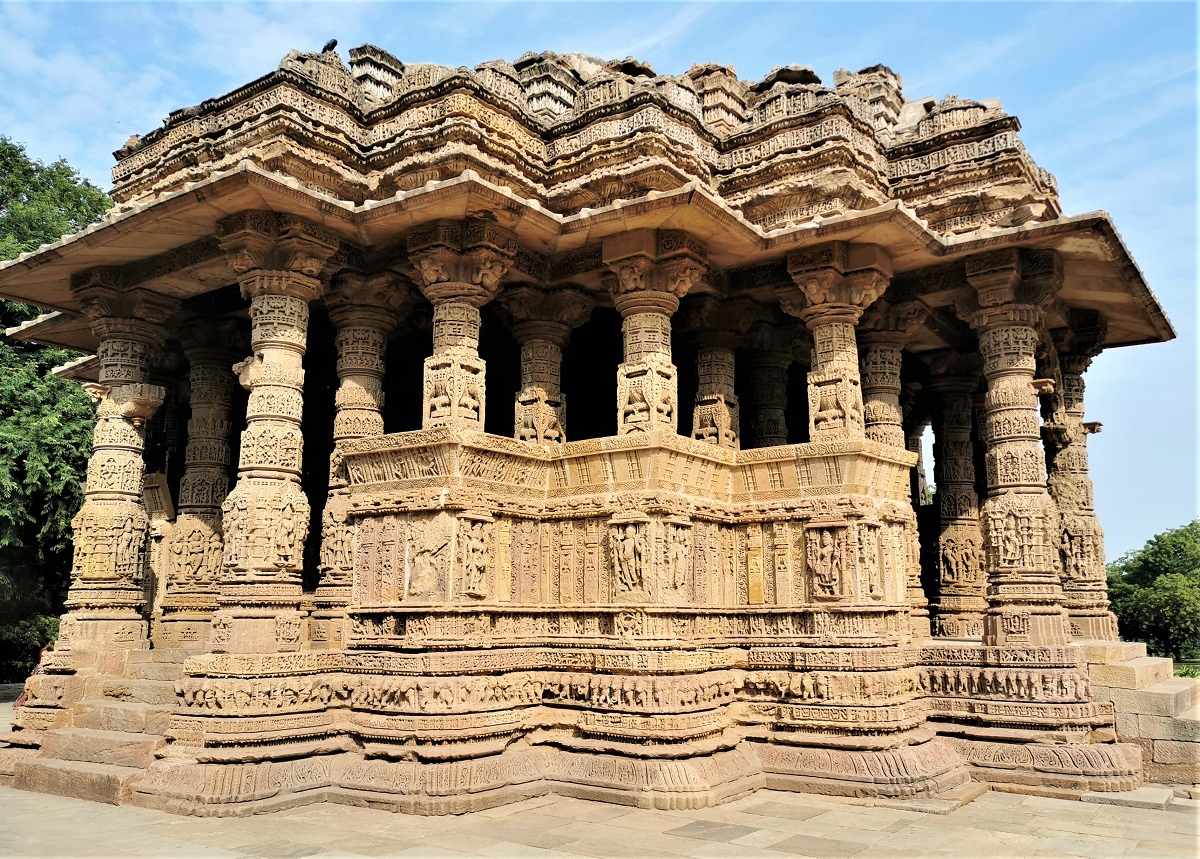The Ranns, deserts, artisan villages, stepwells of Gujarat, and much more… in 9 stories… this is ‘story 2’
Co-authored & edited by my travel companion – Shoba Nayar
Modhera Sun Temple
Arriving in Modhera
We arrived at the town of Modhera, famous for its UNESCO* heritage Sun Temple built in 1026AD by King Bhimdev, a Solanki King of the Chalukya dynasty who ruled from Patan. Steeped in mythological history, it is said Lord Rama carried out ‘Yagna’ (ritual with a specific purpose) there.
*UNESCO: United Nations Educational, Scientific and Cultural Organization
Our destination in Modhera
We visited the Sun Temple on the banks of the Pushpavati River where, set in park like grounds the two main temples and the kund (bathing pond) dominate the landscape. The complex, dedicated to the Sun God, Surya, has a rich and fascinating history. The Surya Kund, a deep and steep sided stepwell, was adorned with 108 minature shrines and originally used to store pure water. Now, it holds just rainwater. It is thought that it was originally fed by an underground spring.
The two temple halls, Gudhamandapa (shrine hall) and Sabhamandapa (assembly/reception hall), are constructed upon lotus shaped bases.
The Sabhamandapa contains 52 exquisite and delicately carved sandstone pillars to hold up the roof. Covering every inch of the pillars are carvings that depict aspects of Vedic culture from the Ramayana to the Mahabharata, the human lifecycle and everyday life.
The ‘assembly halls’, used for religious gatherings, were apparently constructed for the pilgrims so that they could sit and rest. The sanctum sanctorum (sacred chamber) used to contain an idol of the Sun God before being ‘plundered’ by the Persian ruler Mahumud of Ghazni.
Ancient architecture revealed
All devotional activities have ceased at this temple; however, we were left awestruck by the intricate beauty of the architecture which also reflects the Maru-Gujara Chalukyan style of the time.




You get a feel of the ancient nature of this wondorous place when you stand for photos by the pillars which formed the original main gate; or near the ancient olive trees, knarled, split and weathered by time at the back of the Gudhamandapa by the river.






Typical rural India countryside – To Bajana & the Little Rann
From here, the drive to Bajana and the Little Rann became flat and desert like, and the extensive fields along the way were filled with crops of cotton and castor oil.
We passed the Maruti Suzuki production plant, stretching for miles, strangely modern and very white among the scenes of the quiet rural existence with wandering cows, waterbufflo, goats, and sheep being tended by their shepherds as they had for centuries.
Some time later, we reached our accommodation which was in the quiet countryside among these fields and food crops essential to the survival of rural India.
Story 3… ‘Little Rann of Kutch’ coming soon.
Travel organised with Suresh Bahuguna at Lotus India Journeys!
http://lotusindiajourneys.com/index.php


















Thankyou for an amazing journey.
Thankyou for sending a message of support, that means a lot. kind regards Teresa